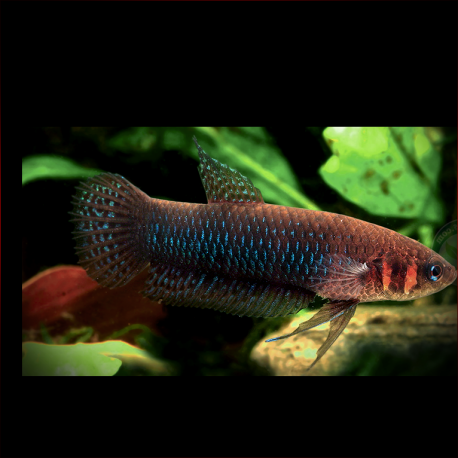More info
Datasheet
| Minimum Tank Size | 40 litres / 10.57 US gallons |
| Maximum Size | 4.5cm / 1.77inches |
| Temperature | 22°C / 71.60°F - 27°C / 80.60°F |
| Hardness | 1.01dgH / 18ppm - 5.04dgH / 90ppm |
| pH | 4.0-6.5 |
General Description
Betta hendra, also known as B. sp. ‘Sengalang/Palangkayara’, is a small fish species belonging to the family Osphronemidae. It is part of the Betta coccina group, characterized by its small adult size, red or black body coloration, and specific habitat preferences. This species has intricate patterning that may pose challenges in identification among similar species within the group. Bettas are known for their labyrinth breathing organ that enables them to breathe atmospheric air, a trait shared by all members of the suborder Anabantoidei.
Aquarium Setup
B. hendra thrives in a well-decorated aquarium setup, typically without a substrate for easier maintenance. Providing driftwood, roots, branches, clay plant pots, and piping offers shelter for the fish. Incorporating dried leaf litter not only enhances the natural environment but also fosters the growth of microbe colonies serving as a secondary food source. The tank should mimic blackwater conditions with dim lighting, aquatic plant species like Microsorum and Cryptocoryne spp., and floating vegetation. Maintaining acidic and soft water with minimal carbonate hardness is essential, achieved through a suitable filtration system like an air-powered sponge filter.
Behaviour
This species is best kept alone or with peaceful tankmates due to its non-competitive nature. It can be maintained in pairs or groups, showcasing intriguing behavioral interactions in a group setting. Selecting tank companions carefully is crucial to avoid intimidating or outcompeting B. hendra. Peaceful species like small cyprinids and loaches are suitable options for cohabitation.
Feeding and Diet
In the wild, B. hendra feeds on insects and small invertebrates. Captive specimens readily accept dried food but should be regularly offered live or frozen options like Daphnia and bloodworms to enhance coloration and overall health. Small insects such as crickets and fruit flies are suitable treats, ensuring a balanced diet. Overfeeding should be avoided to prevent obesity, a common issue in Betta species.
Reproduction & Dimorphism
As a bubble-nester, B. hendra requires ample cover for the female during spawning. The male constructs and guards the nest where eggs are deposited and tended. Sexual dimorphism is evident in adult males displaying more vibrant green pigmentation and darker opercular bars compared to females. The breeding process involves a typical osphronemid embrace, leading to the transfer of eggs to the male's nest for incubation.
Habitat and Distribution
Native to the Sabangau peat swamp in Kalimantan Tengah, Borneo, B. hendra thrives in blackwater ecosystems with minimal dissolved minerals and acidic pH levels. This region's distinct characteristics, such as dense marginal vegetation and submerged organic material, mirror the ideal habitat for this species. The distribution of B. hendra is restricted to specific locations within the peat swamp, emphasizing its adaptation to unique environmental conditions.

